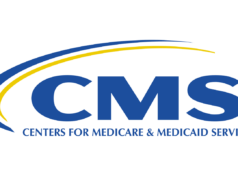 A pooled meta-analysis found that patients with symptomatic carotid stenosis enrolled in recent randomized controlled trials (RCTs) had a lower risk of stroke after randomization than historical controls. According to authors Urs Fisch, MD, PhD, of the University of Basel, Basel, Switzerland, and colleagues, their findings add to the current evidence that the risk of stroke associated with symptomatic carotid stenosis has decreased over time, potentially attributable to improved medical care and risk factor control.
A pooled meta-analysis found that patients with symptomatic carotid stenosis enrolled in recent randomized controlled trials (RCTs) had a lower risk of stroke after randomization than historical controls. According to authors Urs Fisch, MD, PhD, of the University of Basel, Basel, Switzerland, and colleagues, their findings add to the current evidence that the risk of stroke associated with symptomatic carotid stenosis has decreased over time, potentially attributable to improved medical care and risk factor control.
“The added benefit of carotid revascularization to modern medical care needs to be revisited in ongoing and future studies”, the authors write in the European Journal of Vascular and Endovascular Surgery (EJVES). Until then, however, they urge that the data “should not deflect from current recommendations for early revascularization of patients with symptomatic carotid stenosis considered to require invasive treatment”.
Improvements in medical therapy over time “may have lowered the risk of stroke in patients with symptomatic carotid stenosis”, write Fisch et al, who claim that the present study addressed this question by the first comparison of individual patient data from two historical series of large RCTs with very similar inclusion criteria.
The authors detail that current guidelines recommending rapid revascularization of symptomatic carotid stenosis are largely based on data from clinical trials performed at a time when best medical therapy was “potentially less effective than today”. Therefore, they assessed the risk of stroke and its predictors among patients with symptomatic carotid stenosis awaiting revascularization in recent RCTs and in medical arms of earlier RCTs.
Fisch and colleagues compared the pooled data of individual patients with symptomatic carotid stenosis randomized to stenting (CAS) or endarterectomy (CEA) in four recent RCTs, and of patients randomized to medical therapy in three earlier RCTs comparing CEA versus medical therapy. They note that the primary outcome event was any stroke occurring between randomization and treatment by CAS or CEA, or within 120 days after randomization.
The investigators included a total of 4,754 patients from recent trials and 1,227 from earlier trials. In recent trials, they relay in EJVES, patients were randomized a median of 18 days (interquartile range [IQR], 7–50) after the qualifying event. They report that 23 suffered a stroke while waiting for revascularization (cumulative 120-day risk, 1.97%; 95% confidence interval [CI], 0.75–3.17) and that 61 patients had a stroke within 120 days of randomization in the medical arms of earlier trials (cumulative risk, 5%; 95% CI, 3.8–6.2). In addition, they communicate that stroke risk was lower in recent trials than in earlier trials when adjusted for time between qualifying event and randomization, age, severity of qualifying event, and degree of carotid stenosis (hazard ratio, 0.47; 95% CI, 0.25–0.88; p=0.019).
The authors acknowledge some limitations of their study, including the fact that the number of strokes in recent trials was low, which limited statistical power, and that the populations “may have differed in factors that were not accounted for”. In addition, they recognize that patients enrolled in RCTs are selected and are therefore not necessarily representative of the population of all patients with symptomatic carotid disease.
Despite these limitations, however, Fisch et al stress that the overarching strength of their analysis is the inclusion of data at individual patient level from two series of clinical trials with very similar inclusion criteria.












